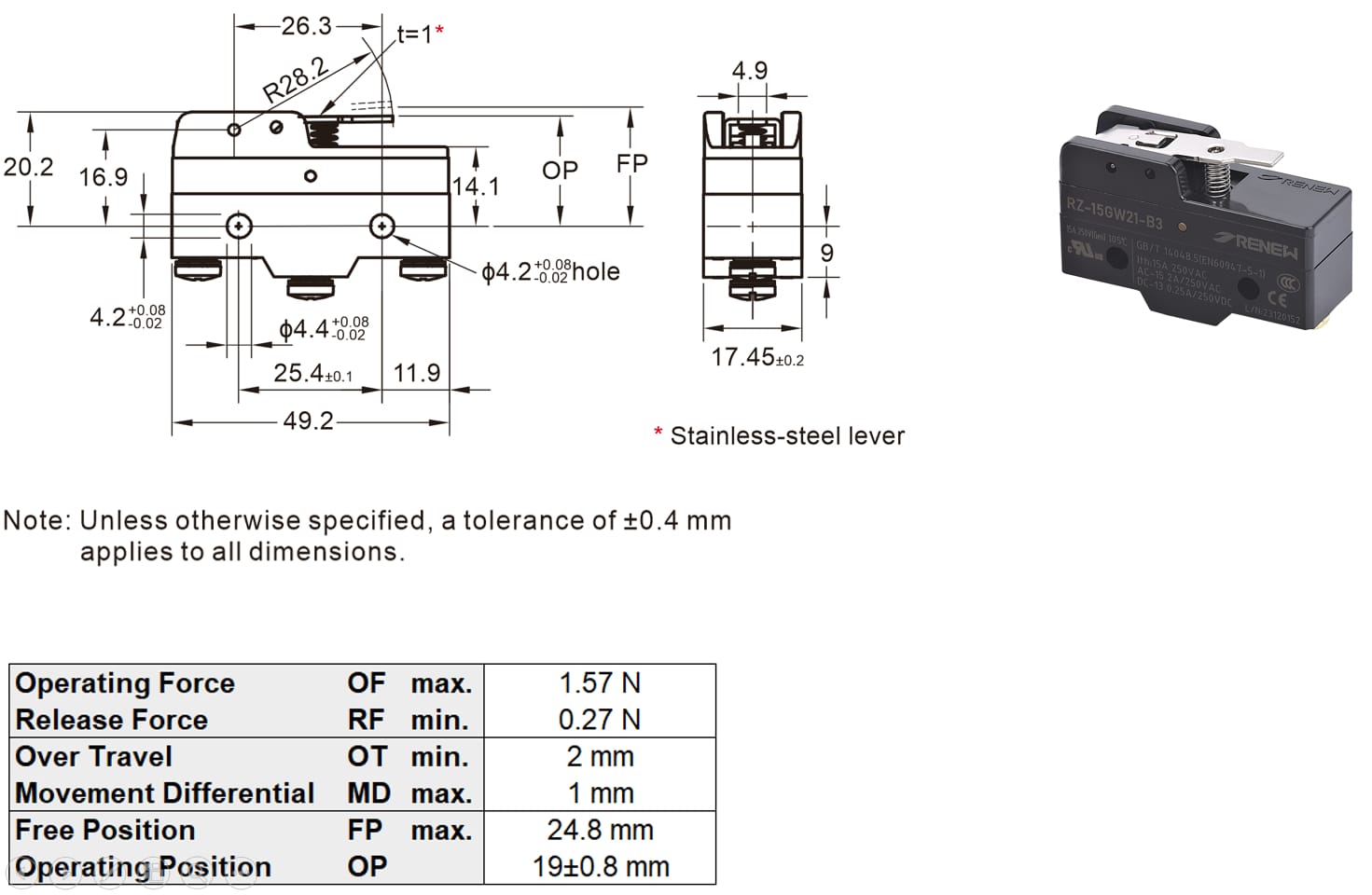Short Hinge Lever Basic Switch
-

High Precision
-

Enhanced Life
-

Widely Used
Product Description
The hinge lever actuator switch offers extended reach and flexibility in actuation. The lever design allows for easy activation and is perfect for applications where space constraints or awkward angles make direct actuation difficult. It is commonly used in household appliances and industrial controls.
Dimensions and Operating Characteristics

General Technical Data
| Rating | 15 A, 250 VAC |
| Insulation resistance | 100 MΩ min. (at 500 VDC) |
| Contact resistance | 15 mΩ max. (initial value) |
| Dielectric strength | Between contacts of same polarity Contact gap G: 1,000 VAC, 50/60 Hz for 1 min Contact gap H: 600 VAC, 50/60 Hz for 1 min Contact gap E: 1,500 VAC, 50/60 Hz for 1 min |
| Between current-carrying metal parts and ground, and between each terminal and non-current-carrying metal parts 2,000 VAC, 50/60 Hz for 1 min | |
| Vibration resistance for malfunction | 10 to 55 Hz, 1.5 mm double amplitude (malfunction: 1 ms max.) |
| Mechanical life | Contact gap G, H: 10,000,000 operations min. Contact gap E: 300,000 operations |
| Electrical life | Contact gap G, H: 500,000 operations min. Contact gap E: 100,000 operations min. |
| Degree of protection | General-purpose: IP00 Drip-proof: equivalent to IP62 (except terminals) |
Application
Renew’s basic switches play a critical role in ensuring the safety, precision, and reliability of various devices across different fields. Here are some popular or potential application.

Sensors and monitoring devices
Often used in industrial-grade sensors and monitoring devices to control pressure and flow by serving as a snap-action mechanism within the devices.

Industrial Machinery
Used in machine tools to limit the maximum movement for pieces of equipment, and to detect the position of workpieces, ensuring precise positioning and safe operation during processing.

Articulated robotic arms and grippers
Integrated into articulated robotic arms for use in control assemblies and provide end-of-travel and grid-style guidance. Integrated into grippers of the robotic arm wrist to sense grip pressure.













